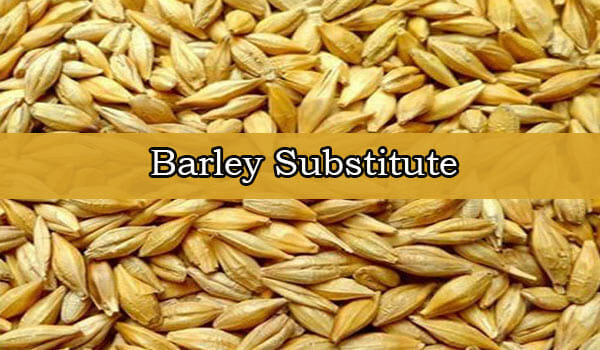Consider yourself in a situation where you are working with a recipe and have almost completed half of the steps. The recipe requires you to work with barley at one step, but you have none of it in the pantry.
What do you do? Do you just scrape your entire work? Not at all! You just need to get the proper barley substitute for that recipe.
But what can you use as a replacement for barley? And which one should you actually choose? Well, those are the questions that we want to address in this guide. So, if you wish to feed your curious mind properly, stick to the very end of this article!
5 Types of Barley Explained with Nutrition Fact
Did you know that what is the healthiest type of barley? Barley comes as a whole, in pearl form, flaky form, and flour form.
And before we talk about the food items that can replace barley, we would like you to have a fair idea regarding each of these forms. So, let’s discuss them in brief, shall we?
Whole Barley
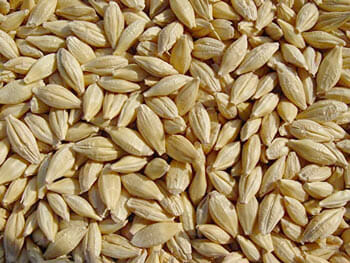
Otherwise known as hulled barley, pot barley, barley groats, or scotch barley, the whole barley is the most nutritious option when you are looking for minerals, fiber, and vitamins.
A diet that consists of hulled barley will reduce the risk of heart disease, obesity, different types of cancer, and other chronic health issues.
That said, the important nutritional facts regarding a cup of barley, which weighs around 184 grams, are:
- Calories: 651 cal
- Protein: 23 g
- Carbohydrates: 135 g
- Total Fat: 4.2 g
- Saturated Fat: 0.9 g
- Calcium: 60.6 mg
- Iron: 6.6 mg
Pearl Barley
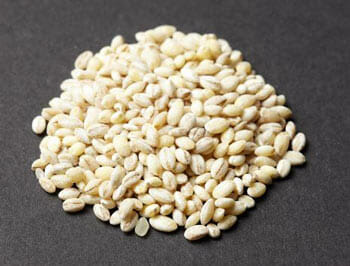
What exactly is pearl barley? Well, it is the barley with the outer skill removed. Many might even call it unhulled barley. The grain of this barley will usually be polished, and this form cooks faster than the hulled ones. For that reason, you will find this kind in most barley food products.
Nevertheless, the crucial nutritional facts, which is 100 grams of uncooked pearl barley, are as follows:
- Calories: 352 cal
- Protein: 9.9 g
- Carbohydrates: 77.7 g
- Total Fat: 1.2 g
- Fiber: 17.3 g
- Calcium: 29 mg
- Iron: 2.5 mg
Barley Flakes
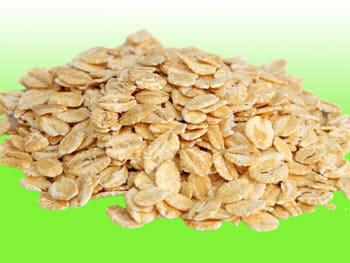
Have you ever wondered what people eat as an alternative to oats? Barley flakes! These are nothing but the product gained by husking the barley kernels and then flattening and rolling them. And the recipes that will contain barley flakes are for breakfasts.
Now, let us go through the important nutritional facts about barley flakes for one serving that weighs 28 grams:
- Calories: 80 cal
- Protein: 3 g
- Carbohydrates: 18 g
- Total Fat: 1 g
- Saturated Fat: 0 g
- Fiber: 3 g
- Iron: 2.94 mg
Barley Grits
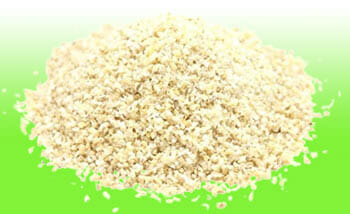
Another popular breakfast item is the barley grits. These are basically small chips of barley, which you can use as breakfast cereal. You can also use barley grits to make dishes that are similar to polenta.
Also, you should note that this form of barley cooks faster than the other ones that we have discussed.
With the introduction out of the way, let us go through the crucial nutritional facts, which are for one serving that weighs 39.69 grams:
- Calories: 140 cal
- Protein: 5 g
- Carbohydrates: 29 g
- Total Fat: 1 g
- Fiber: 5 g
- Potassium: 124 mg
Barley Flour
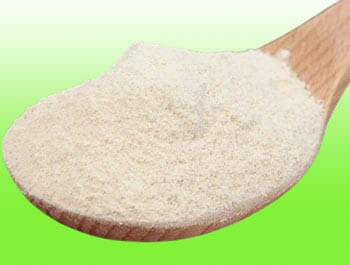
Last but not least, we have barley flour. These are basically from whole barley grain. And you can easily obtain it by grinding the whole barley grains. And you can use this flour to bake cookies, bread, biscuits, make pancakes, and other dishes.
Nevertheless, the crucial nutritional facts of 148 grams of barley flour are as follows:
- Calories: 511 cal
- Protein: 16 g
- Carbohydrates: 110 g
- Total Fat: 2.4 g
- Fiber: 15 g
- Sugar: 1.2 g
The 7 Best Barley Substitute For Your Recipes
Now that you have a fair idea regarding barley, let us get to the point that brought you here in the first place. So, here are the best replacements that you can use instead of barley:
1. Quinoa

In the race of the most ancient grain, quinoa is a totally valid competitor for barley. In fact, it is one of the grains that dates back thousands and thousands of years, and many people consider it the mother of all grains.
Don’t believe us? If you take a look at ancient cultures, you will find the presence of this grain. However, did you know that quinoa is not actually a grain? Yes, it is rather a seed.
And it comes from the goosefoot plant. That is the same plant that is closely related to spinach. Nonetheless, nowadays, you will hear about quinoa when people are talking about lifestyles and diets.
Usually, people would choose the seed when they want to replace their less healthy white rice or pasta from their diet. But it is a proper replacement for barley as well.
You can easily keep it as an alternative option when the recipe asks for pearl barley. But the great news is that it is a gluten-free replacement as well.
Overall, if you are someone that cannot have meat and are looking for a complete source of proteins, quinoa should be on the top of your list. Also, you can work with this grain in recipes that require other grains in general.
That includes risotto as well. However, you should note that it requires comparatively less broth or stock.
Nutritional Values ( 1 Cup Cooked)
- Carbohydrates: 39 g
- Calories: 222 cal
- Protein: 8 g
- Fiber: 5 g
- Fat: 6 g
- Iron: 2.76 mg
2. Farro
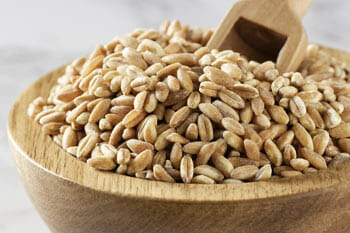
Looking for a substitute for barley in soup? Farro has got your back. The reason why it is the best alternative to barley is because of its nutty flavor. Let us not forget to state its wonderful chewy texture, which does not fail one bit to mimic barley.
Basically, farro and barley are interchangeable in pretty much every recipe. On that note, farro is the standard choice for people following the Mediterranean diet, which is considered one of the healthiest diets in the world.
And just like barley, farro has different forms. There is a variety called pearl farro, and it is a perfect substitute for pearl barley.
Talking of which, pearl farro will lose its bran while cooking, making the cooking time much shorter. But even though pearl variety seems like the apparent go-to pick as a replacement for barley, we recommend you use whole farro. Why? That version is more nutritional than the pearl one.
Now, you might be wondering why you should use the whole farro when it takes longer to cook. Well, if you soak it, it will just take 10 to 15 minutes to cook. Unsoaked ones will take around 25 to 30 minutes to cook.
And even though the cooking time might be a little longer than pearl, the nutritional values are worth it!
Nutritional Values ( ¼ Cup/ 1 serving)
- Carbohydrates: 30 g
- Calories: 140 cal
- Protein: 6 g
- Fiber: 3 g
- Fat: 1 g
- Iron: 2mg
3. Buckwheat

Even though the grain has wheat in its name, it has to do nothing with wheat. In fact, it is a perfect gluten-free replacement for barley. But that does not mean that you can not use it to replace wheat in some recipes if you do not want to. You can still use it in freekeh and bulgur.
Furthermore, it will be possible to make buckwheat flour if you can source out buckwheat groats. You can use that flour as a gluten-free replacement for making crepes, pancakes, noodles, and much more.
In fact, if you have made soba noodles before, you might have already used buckwheat flour. Nonetheless, as buckwheat has a low glycemic index, it is considered to be a very healthy choice for people with type 2 diabetes.
Also, it is a proper pick for people suffering from high blood pressure. The ingredient is also rich in copper, magnesium, fibers, manganese, and proteins.
You will find it a bit stronger than the other available grains when it comes to flavor. Buckwheat has more of a toasty and nutty note to it. And for some people, those two strong notes can be a little too overwhelming. However, those two can also make a perfect savory alternative to barley.
Nutritional Values ( 168 g Cooked)
- Carbohydrates: 33.5 g
- Calories: 155 cal
- Protein: 5.68 g
- Fat: 1.04 g
- Fiber: 4.5 g
- Iron: 1.34 mg
4. Brown Rice
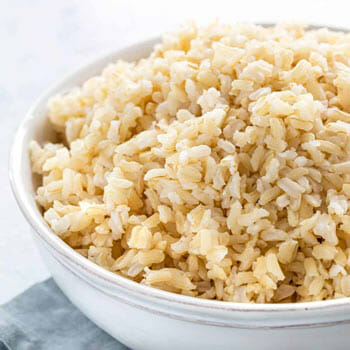
Everyone knows that brown rice is a healthier and more nutritional choice than white rice. White rice is overly-processed, and the processing that it goes through makes it lose germ layers and the bran.
And those two retain a significant chunk of nutrients, such as vitamins, antioxidants, and minerals. However, that does not mean that brown rice does not go through any processing at all.
In fact, it goes through a polishing mechanism, which removes the hull. But the hull is just the protective layer of the bran, and losing it does not translate to any nutrient loss. That is why brown rice is an excellent alternative to barley.
But you need to understand one thing; brown rice is still rice. Even though it is a healthier option, it still contains many calories and carbohydrates. However, you will not feel bloated with carbohydrates as it has a low glycemic index.
Also, the grains are rich in fibers, which will make you feel full for a longer amount of time. Furthermore, if you integrate brown rice into your diet, you might control your cravings for food over time.
That would eventually allow you to consume fewer calories than usual. And let us not forget to state that it is a great gluten-free replacement for barley, just like buckwheat and quinoa.
Nutritional Values ( 1 Cup/ 1 Serving)
- Carbohydrates: 45.8 g
- Calories: 218 cal
- Protein: 4.52 g
- Fat: 1.62 g
- Fiber: 3.51 g
- Iron: 0.8 mg
5. Millet

Another seed that functions as a whole grain is millet. In the USA, it is most common for its flour form. However, these seeds are the go-to pick for a wide variety of recipes around the world.
And in some cultures, it is considered a staple part of the people’s diet. The thing that sets these corn-like kernels is that they are gluten-free. Yes, they are much like quinoa. But if you consider the price, the millet is ¾ cheaper.
Millet is probably the most inexpensive whole grain available on the market. Even though millet looks a lot like corn, it does not taste like corn. In fact, it is one of the sweet grains that quickly takes on the flavor of the recipe you are putting it on.
Now, when it comes to flavor, millet has the nutty note that barley is known for. However, its texture is not chewy like barley. Instead, it is much more comparable to mashed potatoes.
So, what does that mean? It means that the millet is the perfect choice for people that cannot accustom themselves to the texture of barley. Additionally, this replacement for barley is packed with minerals, protein, and iron.
However, you should note that the grains tend to expand when you cook millet. So, if you think you will need a cup of millet, use only ¼th of it in your recipe.
Nutritional Values ( 174 grams)
- Carbohydrates: 41.2 g
- Calories: 207 cal
- Protein: 6.1 g
- Fat: 1.7 g
- Fiber: 2.3 g
- Iron: 1.1 mg
6. Oats
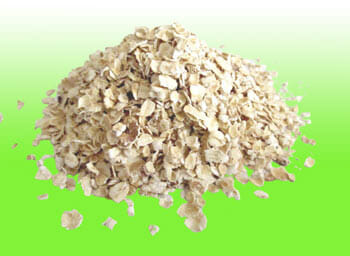
Otherwise known as gluten-free grains, oats are mainly used for baking, like cereals, and sometimes for soups. To be exact, if you know how to take full advantage of its versatility, you can use oats in plenty of different ways.
For that reason, people from various regions consider oats to be the staple food. Nonetheless, you need to consider that oats contain a good amount of fat. That means you cannot expect them to have a long shelf life.
Considering that, we would suggest purchasing oats in small amounts if you do not know when you will use them in a recipe. Other than that, oats are great for women as they are packed with vitamin B6.
That vitamin helps for balancing the hormones and even reduces premenstrual symptoms. Now, when it comes to replacing barley, you can use it just like barley. But note that there are more uses for oats than just as a replacement. So, think outside the box!
Nutritional Values ( 100 grams)
- Carbohydrates: 66.3 g
- Calories: 389 cal
- Protein: 16.9 g
- Fat: 10.6 g
- Fiber: 6.9 g
- Iron: 4.7 mg
7. Sorghum
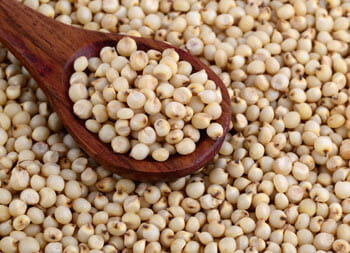
Last but not least, we have sorghum. It is yet another gluten-free replacement for barley. Even though its origin is in Africa, the USA is the biggest sorghum producer.
So, if you thought that you would be capable of accessing this whole grain quickly, you do not have anything to worry about. On that note, a few years back, sorghum was mostly used to feed animals.
The growing demand and interest for gluten-free and healthy grains have recently made it gain its reputation as a gluten-free alternative to regular baking mixes and flour.
Nonetheless, sorghum can easily replace some other grains that we have talked about other than barley. That includes buckwheat and quinoa. You will even get an appetizing consistency and taste if you utilize it in different soups and dishes.
In terms of nutritional values, sorghum does not skimp one bit! The grains are packed with proteins, magnesium, iron, complex carbohydrates, and B vitamins. For that reason, many see sorghum as an energy booster and tries to use it in different recipes.
Nutritional Values ( 100 grams)
- Carbohydrates: 72 g
- Calories: 329 cal
- Protein: 11 g
- Fat: 3 g
- Fiber: 7 g
- Iron: 12.5 mg
How to Choose a Substitute for Barley?
Now that you have a fair idea regarding the barley alternatives, you could be a little bit confused regarding which one you should actually pick for your recipes. Well, that is where this segment of the guide steps in. Consider these before picking one:
Is It the Most Barley-Like?
If you plan to get a replacement that perfectly mimics barley, you need to consider the texture and flavor. And in this case, the farro could be a perfect choice because it has the perfect chewy texture and savory flavor that mimics barley the most.
Furthermore, if you are a fan of the pearl version of barley, you will be amazed to know that farro has its pearl form as well. Again, that would be the perfect pick for you if you want to replace pearl barley.
Do You Want a Gluten-Free Alternative?
Next, you would want to question yourself if you want to prioritize gluten-free nature or not. In fact, we believe gluten-free replacements would be the most sought-after as people are always trying to find something better and healthier.
Now, the good news is that if you are looking for gluten-free alternatives, you have loads of options. Pick any from brown rice, sorghum, buckwheat, or quinoa.
Want to Save a Couple of Bucks?
Healthy diets are great, but not all alternatives are affordable. And if you are on a tight budget, you might not want to opt for the highly gluten-free options.
But that does not mean that you will not have any options at hand. Consider millet, for example. It is pretty affordable compared to other replacements we just talked about.
Do You Wish to Pack Your Recipe with Energy?
You might have already noticed that some of the alternatives have a good amount of carbohydrates and calories in them. For example, take a look at brown rice or sorghum.
Even though these two are pretty packed with carbs, the carbs that they contain are good for your health.
Frequently Asked Questions
Is buckwheat the same as barley?
No, buckwheat is not the same as barley. Also, buckwheat is not wheat at all. In fact, it is not a grain at all. You can consider it a sans gluten. Now, even though it is not the same as barley, it is a perfect replacement for barley.
What is the difference between pearl barley and barley?
The primary difference between pearl barley and barley is that pearl barley has a less chewy texture than the regular version. However, pearl barley does not have the nutty flavor as barley.
So, if you are a fan of that flavor, you should pick the regular barley over pearl barley.
What are the health benefits of barley alternatives?
Different alternatives have different health benefits. Consider farro, for example. It helps to improve digestion, which means you can finally get relief from digestive disorders by having farro.
Another example could be buckwheat. It improves heart health, helps in terms of weight loss, and manages diabetes.
Final Words
At this point, you do not really have to stick with barley if you do not have to. Pick any barley alternative that we have talked about by considering the taste, texture, price, and nutritional values.
And we can assure you that no matter which one you pick, you will get a proper replacement for barley.
SeaRanchLodge.com is a participant in the Amazon Associate program and will earn from qualifying purchases.


